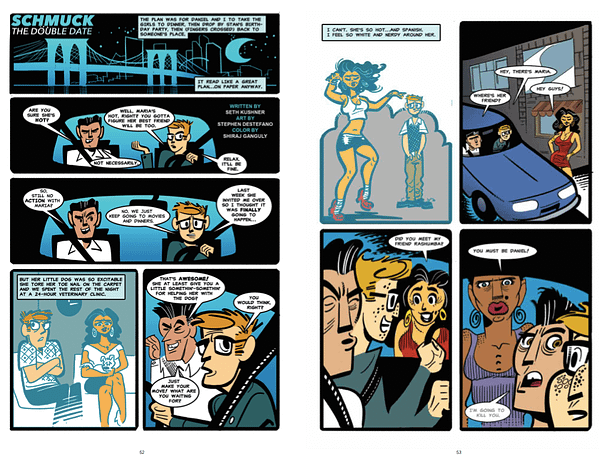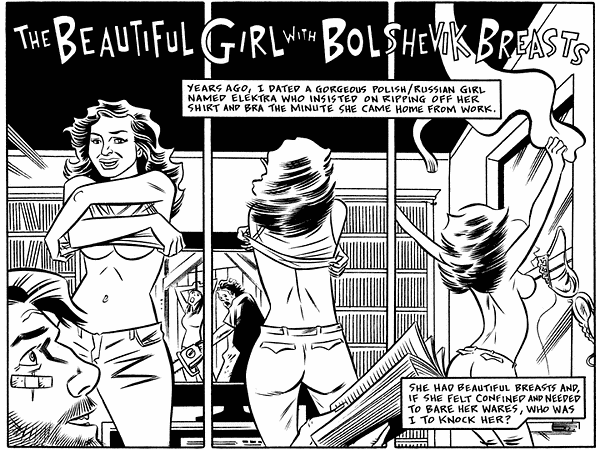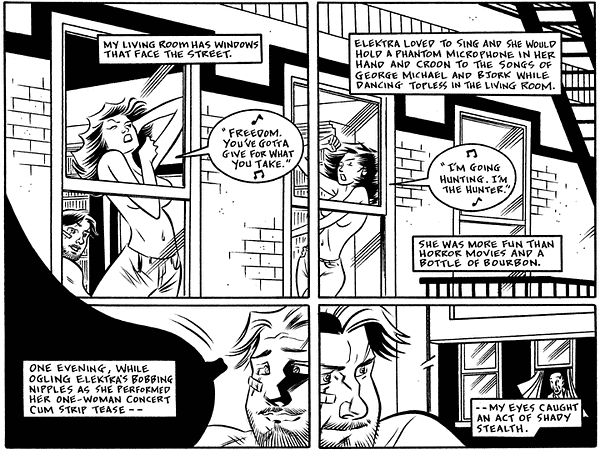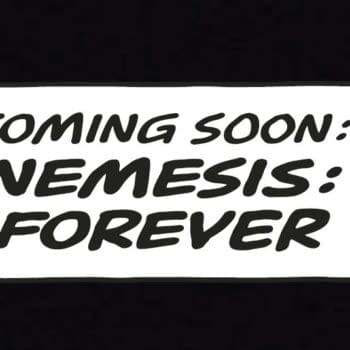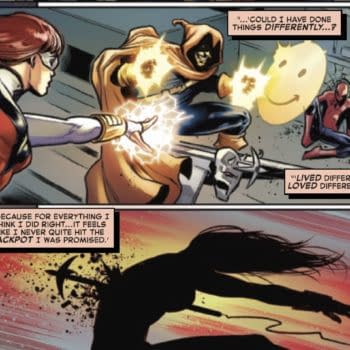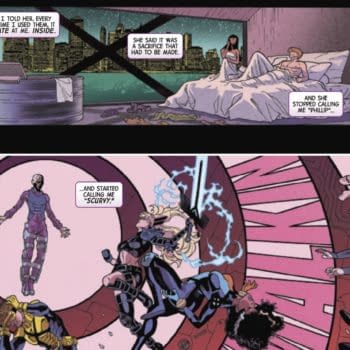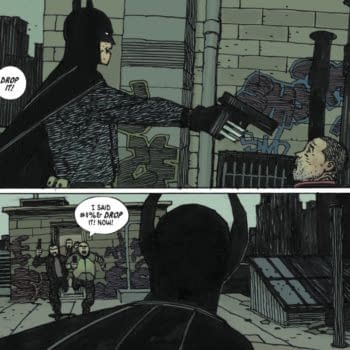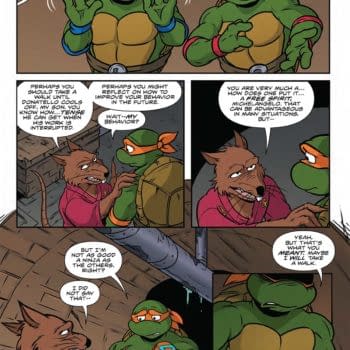Posted in: Comics, Recent Updates | Tagged: Beef with Tomato, Comics, dean haspiel, entertainment, Gregory Benton, indie Comics, Schmuck, Seth Kushner, smoke
Edgy Indie Titles Beef With Tomato, Smoke, And SCHMUCK Land In September – The Hang Dai Editions Mega-Interview

There was always a possibility that the imprint would head toward wider distribution, though, since printing and distributing comics is one of the greatest challenges creator-owned comics faces. It's time-consuming, back-breaking work to get your comics into the hands of readers who are often clamoring for the material. It was great news when Hang Dai Editions announced a partnership with Alternative Comics for distribution in 2015. The slate of books announced for that wave of distribution included Beef With Tomato, which is a collection of auto-bio comics and essays by Dean Haspiel, a new graphic novel from Gregory Benton titled Smoke, and Seth Kushner's collaboration with more than 20 indie artists, a tale of searching for love called SCHMUCK. The three books are very different in content, but if there's a Hang Dai Editions "flavor", it's that tendency to push things right to the edge of comfort in delivering a very real human experience to the reader.

I spoke with Dean Haspiel about Beef With Tomato, and with Gregory Benton, first about Smoke, and then about SCHMUCK since he and Haspiel are now intimately involved with the production of the book throughout Seth Kushner's illness, and now act on behalf of Kushner and his family in seeing the book through publication and promotion.
Part I: Beef With Tomato with Dean Haspiel
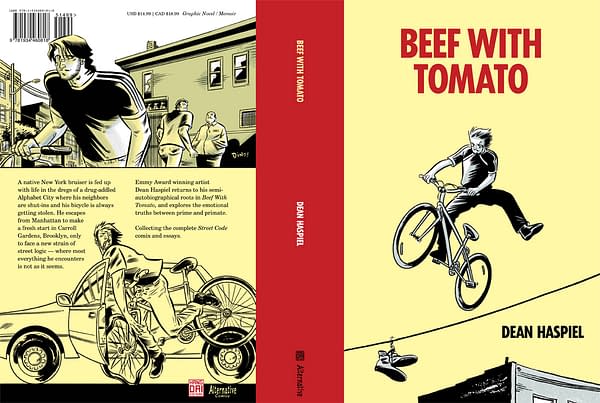
In all seriousness, your love affair with New York/Brooklyn seems to be your longest running fictional romance. Sometimes from reading your comics I think it's the most messed up place on earth, sometimes I think it's the most wonderful. What's life like as a comics creator between those two extremes?
Dean Haspiel: My passion and respect for NYC is very much tactile and real and I have the bruises to prove it. And, even though every year I lose another childhood mainstay or three due to crushing rent increases and the ugly fact that NYC is becoming a bizarre maze of banks and pharmacies while bodega's dwindle and cheap ethnic restaurants die and reincarnate into obnoxiously expensive health food stores geared to rape your wallet while thinning your stomach with the latest trends, I still hold my native hometown dear to my heart like a battered wife. Which is what I'm comfortable with because, after all, I'm a foolish writer and artist trying to tell and sell stories while living in the most expensive city of the 21st Century.
NYC may be not be the most messed up place on earth but it is the most mixed up. And, I fear that we're finally running out of rundown neighborhoods for artists to colonize and create what made NYC cool and communal. There is no more middle class. There is just rich people and poor people and I don't think this modern NYC is worth suffering for anymore. Is the love affair over? Never. I'm a New Yorker, born and bred. Which is why my escape from Manhattan to Brooklyn, as documented in Beef With Tomato, is even more relevant as I consider my next pilgrimage while currently on a writer's retreat at Yaddo.

DH: In 2001, I published Opposable Thumbs, a 48-page semi-autobio comic with Alternative Comics. It was a collection of my then favorite real-life stories that I'd drawn for Keyhole, a two-man anthology I used to do with Josh Neufeld, and other random publications like Bob Fingerman's first volume of Minimum Wage. It even had an introduction by Harvey Pekar drawn by Neufeld. So, I dabbled with my own memoir comix before drawing others; collaborations with Harvey Pekar, Jonathan Ames, Inverna Lockpez, Jonathan Lethem, and The Doors. I made a conscious decision to abandon drawing memoir for awhile because I was itching to draw superheroes. But, in 2008, I developed a concept to reinterpolate some of my real-life essay writing into comix form under the title "Street Code" for Zuda, a now-defunct webcomics imprint underwritten by DC Comics, and most of those comics, plus some others and essays, make up the bulk of Beef With Tomato.

DH: All the stories in my memoir comix are true. Sometimes the stories take longer to write than to draw because there is a specific art to making slice-of-life comix. As the author, you have to account for your tale or it fails. But, real life isn't always plausible. It can be excruciatingly painful yet wonderfully insane with no rhyme or reason. And you have to be able to account for that. So, there is a delicate hopscotch between what is true and what is dramatized and how to honor yet express the emotional truths. Otherwise, it can feel like a ruse and no one reads memoir to be lied to.
HMS: I haven't read some of these comics before, which is incredibly exciting for me, but they are hard to read because in several instances, I have in real life been walking down some street and you've pointed to a building and told me a story that happened there, and since you're as good a verbal storyteller as well as an artist, I experienced that level of story where they actually happened.
And now I read the comics form of the stories and it's even more visceral since I've been there and I'm mentally turning the corners and such. Tell me about the relationship between words and pictures for you and how you chose the prose-poetry narrative style you use in stories like "Doored" and "The Beautiful Girl With the Bolshevik Breasts".
DH: Thanks, Hannah. I think my best stories are the ones I perform off-the-cuff. Both my parents are great storytellers, and my good buddy Jonathan Ames is an amazing orator. So, I must have learned it from them. Text relies on the reader to co-author; to expand the experience, while other mediums depend on sound or visuals, sometimes creating a seamless yet passive experience. But, it's all about pacing and theater. When to entice and when to pause. When to…reveal. And the more you can relate to the verisimilitude of truth the more profound. I often think about what makes a comic and what makes prose or film or a song. The very same study that goes into what to visualize and what to say. It's a balancing act. I don't think I've ever gotten it right but I challenge myself every time I make art while, hopefully, providing some semblance of entertainment.
HMS: Now, there is a significant prose element to this collection. Can you explain their origin and the ways in which they operate similarly or differently to your other modes of storytelling?
DH: I had a tough time deciding which of my prose to put into Beef With Tomato. I've written a bunch of short stories and essays and I chose tales that fit the tone of the tome. Some of these stories were slated to be edited into future comix scripts. Others are only meant to be read in text form. I also perform some of them at salons and readings. Which is interesting unto itself because I might speak a sentence that can change the way the reader "heard" it when they first read it and forever alter its proposed context. It's an fascinating interplay between source, interpretation, and what makes it canon. Is it mine or is it yours once I let it out into the world? Both.
HMS: How did Hang Dai Editions come to be distributed by Alternative Comics and what are your plans this year for bringing Beef With Tomato to readers?
DH: When Hang Dai finally decided to officially sell and distribute some of our books and graphic novels on a retailer level, we faced the problem of securing a good distributor. Most distributors don't have the time and space to dispense occasional efforts. And, even though we have several members in Hang Dai Editions, it's not an imprint that publishes regularly. So, we had a good talk with Marc Arsenault, publisher of Alternative Comics, and he graciously partnered with us to help distribute (and even publish some of) our books. Which took a load off our hands as we learn the nuts and bolts of the publishing side of the industry.
Come September, we're releasing three graphic novels: Seth Kushner's SCHMUCK, Gregory Benton's Smoke, and my Beef With Tomato. We'll debut them at Baltimore Comicon and SPX, and plan to do some salons and signing events in the Fall.
Part II: Smoke with Gregory Benton
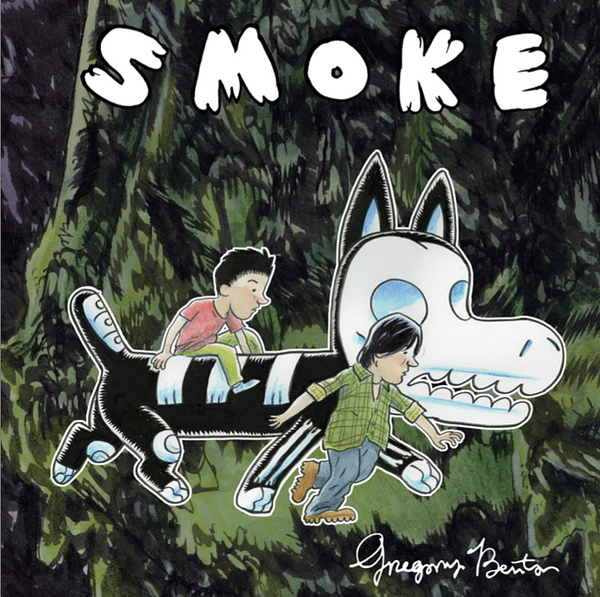
Gregory Benton: Things get lost in translation from my brain to my mouth. One of the reasons many of my books are wordless.
HMS: Well, your large format wordless narrative B+F made a splash, went into a French edition, took you to Angouleme, I believe…
GB: It did! Definitely a dream come true.

GB: Ha! I tried to milk every last ounce from B+F but, yeah, at some point I had to throw the smock back on. While I was sketching and writing the next B+F book, the idea for Smoke snuck up on me, plopped down on the drawing board and refused to leave. I began drawing sequences about two young brothers being protected by the skeleton dog (a Xolo) from B+F.
HMS: I started seeing an image here and there that related to this new project, but only about a month ago did I hear the title "Smoke". When I asked you if it was a cheerful story after the more gruesome aspects of B+F you hinted that it was not. That this story was about kids, hardship, and I think you might have even used the word "horrifying".
GB: You were visiting the studio, and I had just finished a sequence that at first blush could be construed as horrific, but it hadn't been put into context (not even for myself) at that point. I don't think of it as anything more than jarring with the way it fits into the story.
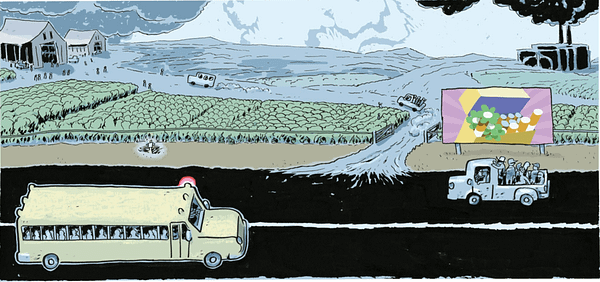
GB: I wanted to get back to my cartooning roots more. My first published work was in World War 3 Illustrated (a political comix anthology founded by Peter Kuper & Seth Tobocman in 1979, and still going strong). Where B+F is a stream-of-consciousness tale of survival, I found Smoke to have more of a social meaning, if that makes sense. When Smoke was forming as an idea for a story, I had been reading accounts about kids working on tobacco farms. I was also talking a lot about this issue with people close to me. I don't get too heavy, it is more of a meditation on the subject.

GB: I go for the broader, more impressionistic strokes of the lives of the people in Smoke. My research on that end was very rudimentary. I read a bit about the technical aspects of tobacco farming and industrial agriculture. I decided to focus on the young workers as my main characters because I believe child laborers represent the most vulnerable group within our current system.
HMS: I don't expect you to spill all the beans on the imaginative process and the symbolism in this story, but can you tell us a little bit about your skele-dog and if he has any points of development in your mind?
GB: While drawing B+F, I wanted a dog to (spoiler!) run off with F's leg. Since B+F had somehow (spoiler!) resurrected in the underworld, I felt a "death-dog" would be fitting. I went through versions of dogs that were skinless and some that were all skeletal and settled on the version that appears. I learned at some point there is a Mexican hairless dog breed known as Xoloitzcuintle (or Xolo for short) that, in Aztec lore, escorts the souls of the recently departed to the afterlife. It was a perfect fit for B+F.
The character of this Xolo is so fun to draw and has so much character that it was just begging to have a life outside of the first B+F. I had to oblige. I was afraid it was going to bite me.

GB: I love traditional media and would rather paint a book or story if time allows. Smoke is divided visually into two parts. There is an "underworld" component executed in ink, watercolor and color pencil. The other part of the story deals with what would be construed as "reality" and is painted digitally over hand drawn pen & ink. I hope this proves an effective way to differentiate the environments.
HMS: What steps have you gone through to produce Smoke in print edition? Are you going to be taking it on the road?
GB: Smoke, production-wise, is a huge shift for me. I'm adept at hand making small print runs of mini-comix (PowderTooth, Crazy, and the original versions of Stake and Pocket Book) as well as publishing some conventional comix floppies (Force of Nature and the later version of Stake) but SMOKE is an 80-page hardcover. The intention from the beginning was for Hang Dai Editions to publish it, and I looked at the process as both a learning experience and an adventure. I designed the whole book, and went through the process of getting quotes from printers, deciding on papers, arranging shipping… All things I had limited experience with before.
My previous book B+F had AdHouse publishing guru Chris Pitzer at the helm. While Chris insisted I execute my overall vision for the book, he brought it all together in an amazing way. I've learned a tremendous amount from Chris about design and aesthetic.
Smoke will debut at SPX alongside Seth Kushner's lovelorn anthology SCHMUCK and Dean Haspiel's Beef With Tomato. All three are Hang Dai Editions books and we've secured distribution through a gracious offer from Alternative Comics. This will help to get the HDE imprint into bookstores as well as comic shops. Dean and I will be doing the convention circuit with all three of the books and the plan is to have artists who have contributed to SCHMUCK join us for signings wherever possible. As far as a road trip like I undertook for B+F, we'll see if Hang Dai Editions is up for a book tour once the smoke clears.
Part III: SCHMUCK with Gregory Benton about Seth Kushner's book
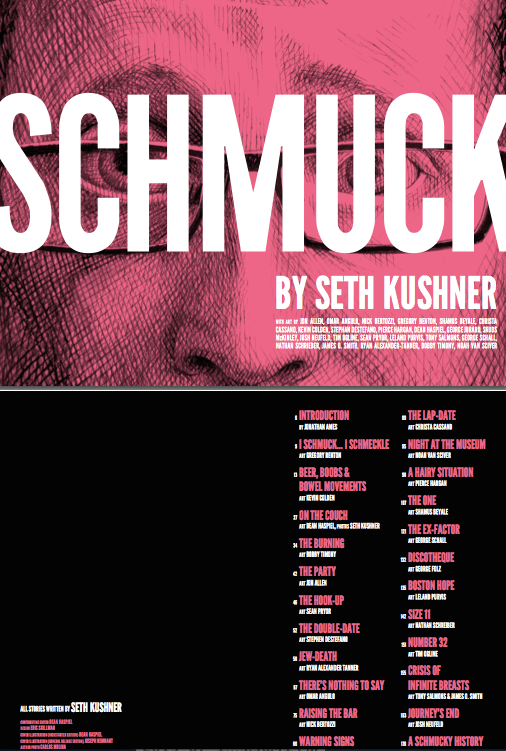
GB: Being that SCHMUCK is taken from Seth's life I guess it should be no surprise that the main character, Adam Kessler, evolves in a realistic manner. Taking the stories individually, this might not be apparent, but as a whole works brilliantly. Seth's scripts were a pleasure to work from, as well. He thought visually, narratively and had extensive knowledge of storytelling having created his "Culture Pop" and "Costumed Characters" fumetti for years. His scriptwriting was concise, dynamic and left his collaborators with plenty of room to breathe.
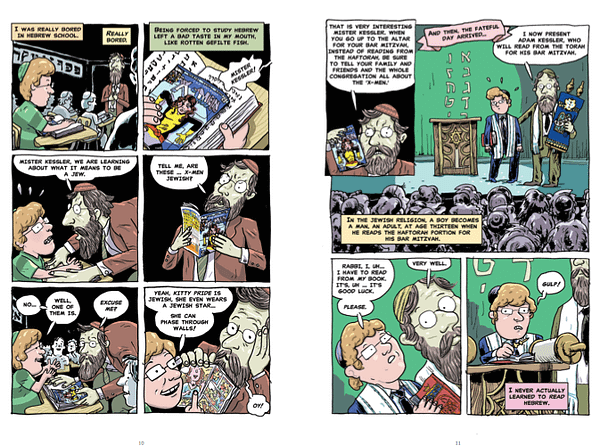
GB: I think it might have to do with his enjoyment and respect for the people he photographed and artists with whom he collaborated. He was genuinely interested in his subjects, made them feel at ease, and in the case of SCHMUCK made the artist feel like an equal part of the creative process.
HMS: Can you tell us a little bit about the design and contents of this print edition of the book? What might it contain that people haven't seen before?
GB: To begin with, the whole shebang was designed by Eric Skillman. The man knows how to make an attractive book! There is a hilarious intro by Jonathan Ames (writer of HBO's Bored To Death and Vertigo's The Alcoholic). Quite a few of the stories featured in SCHMUCK have not been seen before. I drew a strip called "I Schmuck, I Schmeckle" about Seth's cheating on his Bar Mitzvah. Actually, I think that one might've appeared briefly on the HEEB site…

GB: We will have copies of SCHMUCK at every convention or signing Hang Dai Editions attends. The very generous and infinitely patient KickStarter backers will have their copies sent to them beginning in September, and the book can be ordered through your local independent bookstore or LCS (insert Diamond code). Of course, short of those outlets, you can order through your online virtual book pusher.
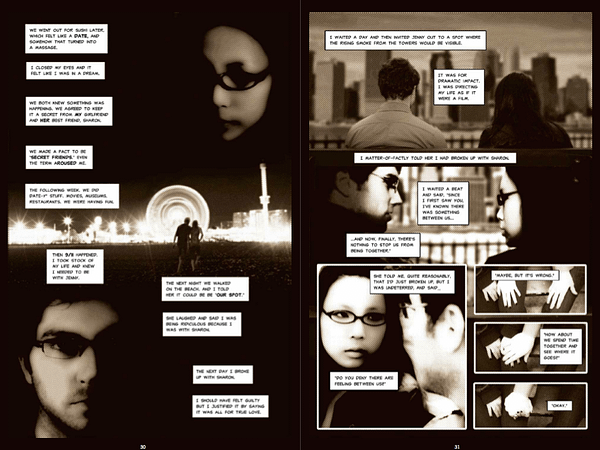
GB: Aside from SCHMUCK, there are several of Seths projects in the works, including The Roman Nose with George Folz and The Brooklynite with Shamus Beyale. A memoir Seth was collaborating on with Jonathan Allen might also come to fruition. Please buy these works as they become available. Of course buy several copies of SCHMUCK for friends, family, frenemies, government officials, etc. If you see HDE at a convention or signing, EVERY cent from the sale of a copy of SCHMUCK will go directly to Seth's beautiful family.
